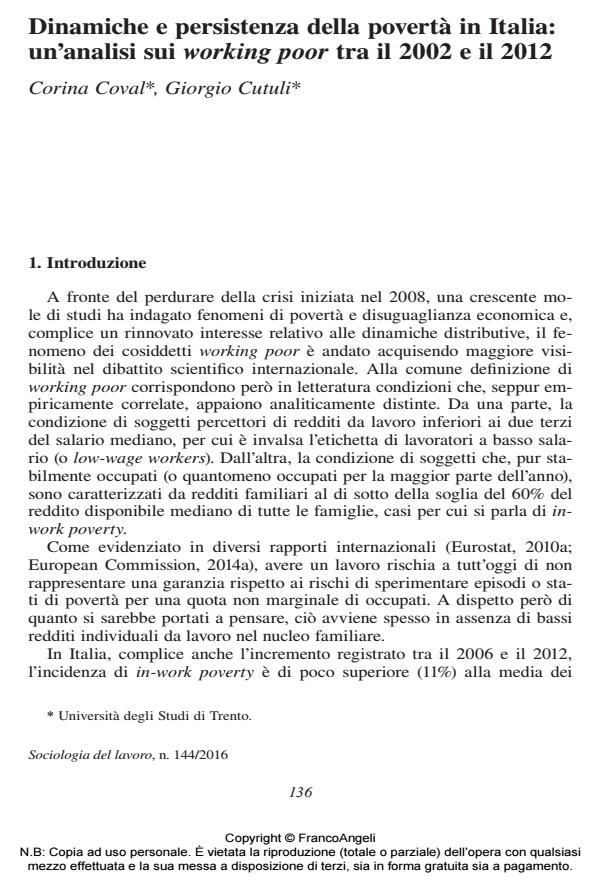The dynamics and persistence of poverty in Italy: an analysis of the working poor between 2002 and 2012
Journal title SOCIOLOGIA DEL LAVORO
Author/s Corina Coval, Giorgio Cutuli
Publishing Year 2016 Issue 2016/144
Language Italian Pages 20 P. 136-155 File size 195 KB
DOI 10.3280/SL2016-144009
DOI is like a bar code for intellectual property: to have more infomation
click here
Below, you can see the article first page
If you want to buy this article in PDF format, you can do it, following the instructions to buy download credits

FrancoAngeli is member of Publishers International Linking Association, Inc (PILA), a not-for-profit association which run the CrossRef service enabling links to and from online scholarly content.
The article sheds light on the dynamics and the determinants of both low wage and in-work poverty risks in Italy, focusing the period between 2002 and 2012. Bank of Italy data show an increase in the incidence of low wage workers, a clear stratification of such risks (in terms of gender, education, individual position in the labor market) and a growing concentration at the expense of the younger cohorts. The data show also an increase in the inertia of low wage conditions, especially after the late 2000s economic downturn. With respect to the link between individual low wages and in-work poverty measured on household income, the authors show that apart from the accumulation of disadvantages experienced by household members in terms of low wage, temporary or part time employment, the highest exposure to in-work poverty are displayed by workers belonging to single-earner or low work intensity households. The overall pattern of the empirical evidence suggests that Italy is facing an increase of economic inequality both in intergenerational terms and between different household types.
Keywords: Low-wage, in-work poverty, inequality, labour market
- Uber in the Portuguese gig economy: a laboratory for platform capitalism Emanuele Leonardi, Giorgio Pirina, in Work Organisation, Labour & Globalisation /2020
DOI: 10.13169/workorgalaboglob.14.2.0046
Corina Coval, Giorgio Cutuli, Dinamiche e persistenza della povertà in Italia: un’analisi sui working poor tra il 2002 e il 2012 in "SOCIOLOGIA DEL LAVORO " 144/2016, pp 136-155, DOI: 10.3280/SL2016-144009